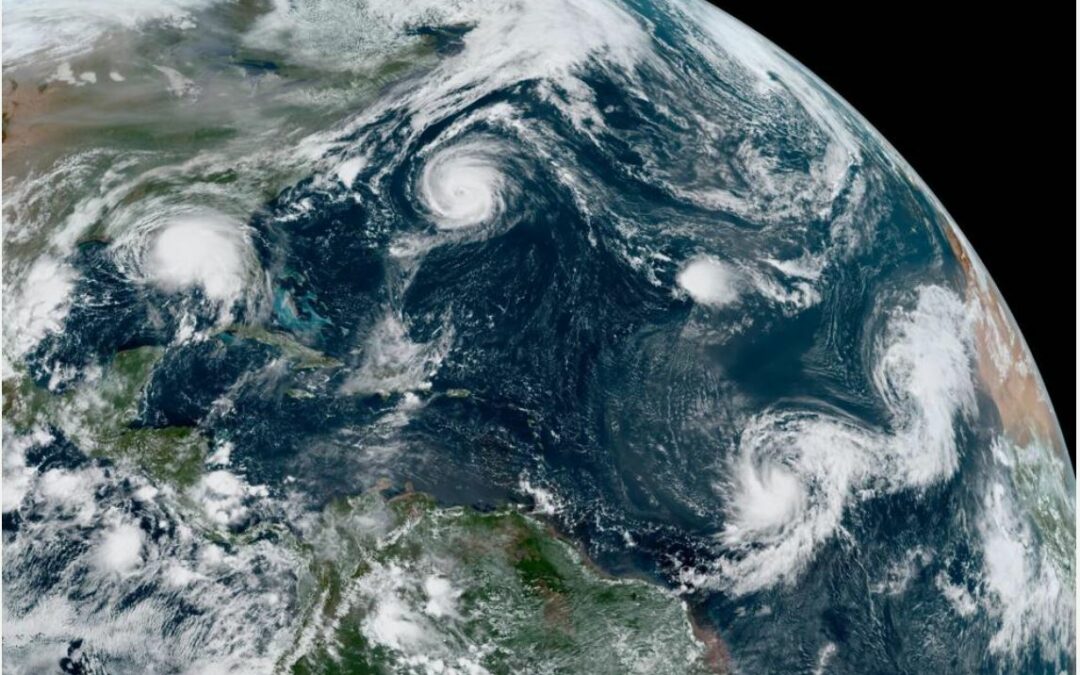We’re now well into the annual hurricane season. Here in the Lowcountry, it’s always a question of when — not if — the next storm will come through.
Even before Charleston’s first permanent European settlers arrived in 1670, tropical storms played a role in our region’s historical narrative.
Two years after Christopher Columbus founded his colony on Hispaniola in 1493, it was leveled by a violent storm Caribbean natives believed was sent by an evil spirit named Uracan (sometimes spelled Juracán). Spanish settlers began calling such storms hurricáns, from which we derive the word hurricane.
The National Oceanic and Atmospheric Administration’s website lists no fewer than 76 storms that have passed over or by Charleston in the 354 years since the colony was settled — 30 of them major.
Other historic sources cite letters and reports that tell of storms that don’t even appear on NOAA’s list.
A thorough retelling of the Lowcountry’s hurricane history would not be possible within the confines of our time together today. I would, however, like to recall a few of the storms that plagued colonists during their first century here.
Hurricane of Spanish Repulse, 1686
Six years after moving to the peninsula, Charlestonians awoke at daybreak on Sept. 5, 1686, to what was probably their first major hurricane. Roofs were damaged, and trees toppled into flooded streets along the Cooper River waterfront. Ships were blown ashore, and casualties — both human and livestock — were referenced, but with few details.
Yet this storm, often referred to as the Hurricane of Spanish Repulse, had a silver lining as it staved off what might have been an even bigger threat to the young colony — for as it approached, three Spanish ships from St. Augustine were on their way to attack Charles Town.
Having burned and looted the small Scottish settlement of Stuart Town near Beaufort, as well as a few English settlements on Edisto Island, the Spaniards had just set sail for Charles Town when the storm’s powerful winds nearly destroyed their ships. They limped back to Florida, and the Charles Town colony was saved.
Hurricane of the Rising Sun, 1700
The Hurricane of the Rising Sun struck Charles Town shortly before high tide on Sept. 14, 1700. The storm draws its name from an 800-ton ship that failed to make it into Charles Town’s harbor in time. About 100 souls on board perished.
In “Lowcountry Hurricanes: Three Centuries of Storms at Sea and Ashore,” author Walter J. Fraser included first-person accounts that give an idea of the storm’s force. In a letter immigrant Edward Hyrne wrote: “On Tuesday September 3, here happened a most terrible Storm of Wind or Hurricane … Thousands of Trees have been torn up by ye Roots, many Houses blown down & more damnified … but ye greatest & most deplorable Loss of all was that of a great Scotch Ship called ye Rising-Sun.”
The winds and waves tore the ship to pieces, which resulted in the bodies of those aboard being washed up along the beaches of Folly and Morris islands. Some credit this incident with “Coffin Island” being listed as a name for Folly Beach on some early maps.
First half of the 18th century
Major hurricanes in 1713 and 1714 destroyed part of the city’s defensive wall, the lookout tower on Sullivan’s Island and the new St. Philip’s Church, which was under construction. More than 70 deaths were recorded.
The hurricane of 1728 next struck the city at the height of a yellow fever epidemic, leaving, as one contemporary wrote, Charles Town’s streets “covered with boats, boards, staves; and the inhabitants were obliged to take refuge in the higher stories of their dwelling-houses … Twenty-three ships were driven ashore, most of which were either greatly damaged or dashed to pieces.”
Two years later, another storm damaged ships, buildings (including destruction of the Baptist Church) and rice fields.
Great Hurricane of 1752
The Great Hurricane of 1752 was probably the worst to ever hit Charleston. Eyewitnesses accounts indicate the storm drove 17 feet of water through city streets. All but one of the ships moored in the harbor came crashing ashore.
The South Carolina Gazette wrote that the storm “has reduced this Town to a very melancholly situation,” adding that at one point during the storm, “many of the people being already up to their necks in water in their houses, began now to think of nothing but certain death.” Had the wind not shifted, “every house and inhabitant in this town, must, in all probability, have perished.”
The Gazette concluded: “We have daily such a Number of melancholy Accounts from all Parts of the Country, of the Damage sustained on the 15th and 30th [of last month] that they would afford endless Matter for this Paper, were we to publish them.”
After the near-complete destruction of the colony in 1752, the evil spirit Uracan seemed to be appeased for a while. It would be 28 years before the angry god sent another tropical storm in June 1770.
Yet as colonists prepared to fight for their independence from Great Britain, the great Atlantic storms were again heating up. We’ll save those stories for another time.
–postandcourier.com



